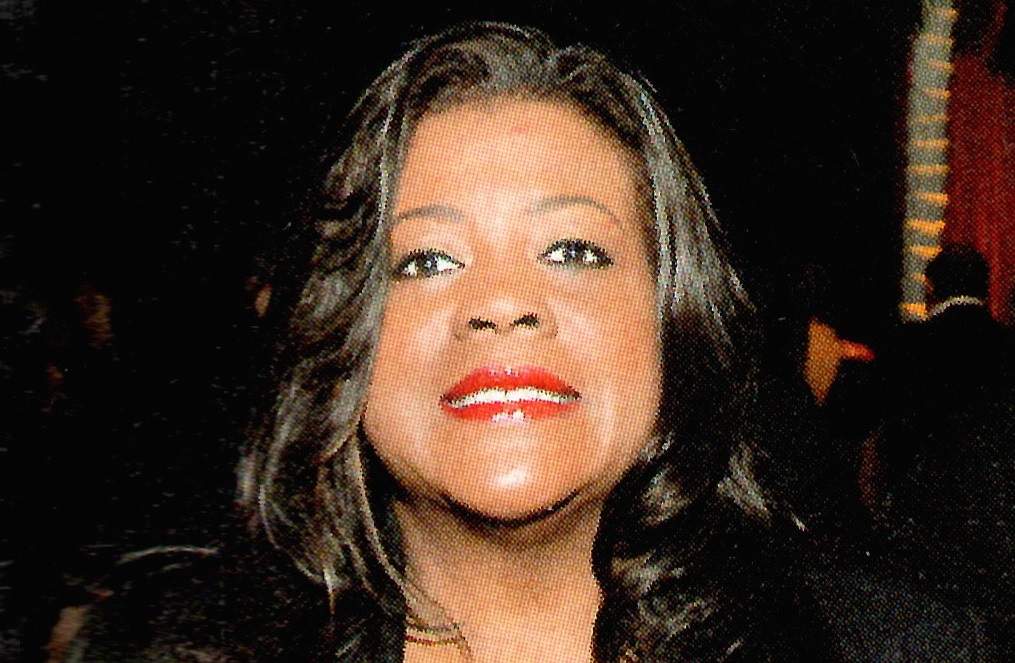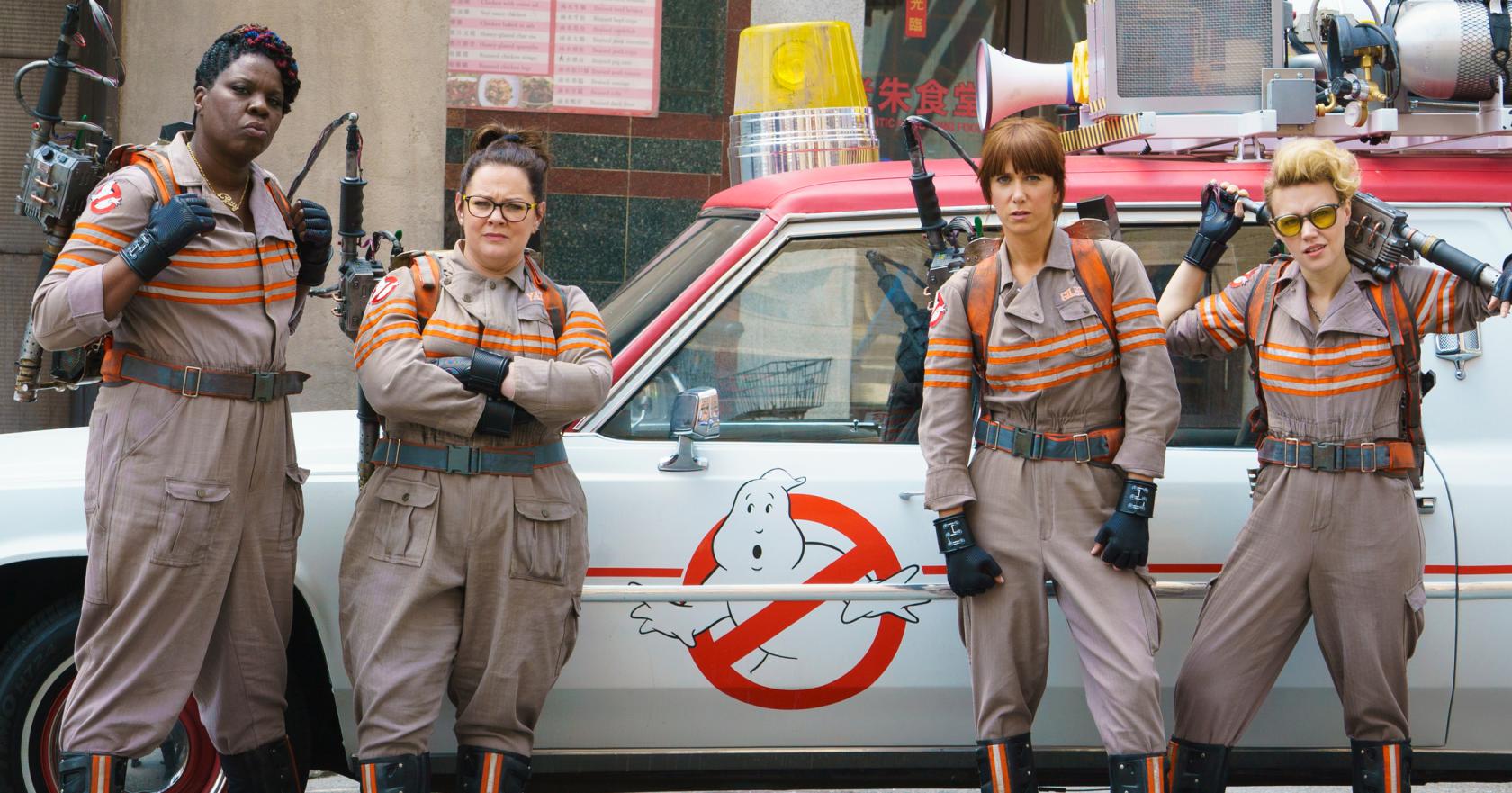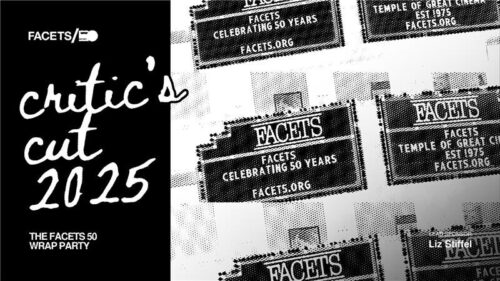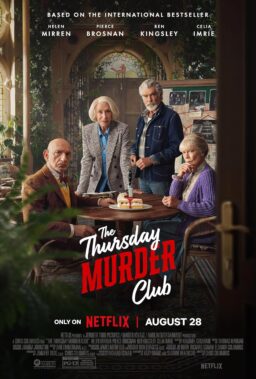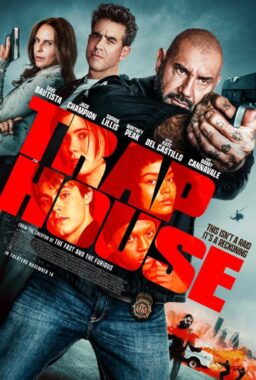With “Ghostbusters” opening tomorrow, I felt compelled to share my thoughts on the film in light of the controversy it has inexplicably garnered. How has the concept of female ghostbusters managed to anger so many male fans of the original film? Some of these reactions have clearly been prompted by a deep-seated sexism in our culture. It is valid to question whether a classic film needs to be remade at all. Yet, for those who simply don’t want to see one of their favorite movies rebooted, isn’t it reassuring to know that this film is taking a new path, rather than merely mimicking the original? It’s not as if director Paul Feig took “Psycho” and tried to make a line-by-line reenactment.
Melissa McCarthy, Kate McKinnon, Leslie Jones and Kristen Wiig are entirely distinctive comedic talents, and they have crafted characters here that stand on their own. If Paul Feig had simply hired an actor to imitate someone as inimitable as Bill Murray, the film would’ve instantly fallen apart. But Feig and the “Lady Ghostbusters” presented us with an updated film with a distinctly geeky feel that can appeal to females and males alike, no matter their age, their race, their sexual identity or cinema preference. This film was simply fun and funny (I was relieved that the film was funnier than the trailer). And was thrilled at the tribute to the late director and actor, Harold Ramis, in the form of the bust that sat in the hall outside of Kristen Wiig’s office at Columbia University.
It shouldn’t be this film’s responsibility to “prove” that women are capable of anchoring a hit comedy (Feig already proved that with “Bridesmaids“). (Also see our commentary on female comedians from Scott Jordan Harris, Craig D. Lindsey and Brian Tallerico.) It also shouldn’t have to drown out the online hate by reinventing the wheel. It simply has to be an enjoyable movie, and it was. All four women were very funny, with Kate McKinnon somehow stealing the show from her very capable teammates with her slyly winking weirdness. It was interesting to watch them work as an ensemble, as McCarthy took on a different persona than usual. If I had any beef with the movie, I would have to ask Feig why Leslie Jones, the only African-American Ghostbuster, couldn’t be a scientist too? Even a scientist can know her way around the city.
Chris Hemsworth was priceless in the role of their clueless secretary. Hemsworth’s deadpan embodiment of eye candy was a key example of the film’s gender-flipped satire targeting summer movie conventions. If men can dream about fighting ghosts while ogling Sigourney Weaver, why can’t women have the same fun? I hope in the sequel they find a way to incorporate Hemsworth’s dance moves in the body of the film rather than making us wait until the end credits. He was hilarious and dare I say, hot.
I am so fortunate and grateful to have topnotch film critics writing for RogerEbert.com. And yet, in some cases, like Susan Wloszczyna’s review of this film, I disagree with their star rating. Hey, even Roger and I didn’t agree on every film. But I defend their right to their opinions. In that spirit I am also presenting excerpts of additional reviews by female critics offering a different take on the film. And I am also reprinting Alan Zilberman’s essay on why men of a certain age are hating on the new film without even seeing it.
Manohla Dargis at The New York Times
“Sliding into theaters on a river of slime and an endless supply of good vibes, the new, cheerfully silly ‘Ghostbusters’ is that rarest of big-studio offerings — a movie that is a lot of enjoyable, disposable fun. […] It’s a lot like the old ‘Ghostbusters,’ except that it stars four funny women instead of, you know, four funny men. In other words, it doesn’t have a lot of XY chromosomes and basso profondo voices, though its token hottie, played by a game, nimbly funny Chris Hemsworth, pulls his weight on both those counts. Otherwise, the redo is pretty much what you might expect from Paul Feig, one of the best things to happen to American big-screen comedy since Harold Ramis.”
Ann Hornaday at The Washington Post
“Sunny, slimy and profoundly silly, the new, lady-centric reboot of ‘Ghostbusters’ immediately silences the backlash and bluster that’s preceded it. Never deigning to take the skeptical and just plain sexist bait that’s been thrown its way since the project was first announced — and that came in buckets when the first trailer was released — this jokey ensemble piece seems engineered to remind viewers of what it was meant to be all along: neither a workhorse for arguments about gender politics nor a Trojan horse for desecrating precious generational shibboleths, but simply an easygoing, enjoyable family comedy.”
Tasha Robinson at The Verge
“McKinnon is this film’s secret weapon, and it’s worth seeing the 2016 ‘Ghostbusters’ just for her. She’s goofy, nerdy, and aggressively weird. She’s an instant idol for smart, dorky women who feel a little out of place, but don’t feel particularly bad about that. She steals scenes from the main cast just with her facial expressions when she’s lurking in the background, and when she takes the foreground to dance to DeBarge’s ‘Rhythm Of The Night’ or enthuse about her latest crackpot invention, she comes across like the world’s most upbeat Batman villain. Jared Leto’s posturing as the Joker in ‘Suicide Squad’ trailers already seems stale; give McKinnon some green hair dye and lipstick and let her grin like she does here, and she already seems crazier — not to mention more entertaining and appealing.”
Stephanie Zacharek at Time
“It’s all presented with a wink—there’s nothing heavy-spirited or assaultive about this ‘Ghostbusters.’ Feig, who co-wrote the script with Katie Dippold (‘The Heat’), has clearly taken great care with the movie’s tone—it’s as delicately balanced as the wings of a spectral butterfly. He honors the spirit of the original: Bill Murray, Dan Aykroyd, Ernie Hudson and Annie Potts all have cameos, and a gleaming bronze bust of the late Harold Ramis graces the hallowed halls of Columbia University, where part of that ‘Ghostbusters,’ like this one, takes place. Yet there’s little that’s nostalgic, in the musty sense, about Feig’s reimagined ghostbusting universe: The movie glows with vitality, thanks largely to the performers, who revel in one another’s company, and not in a self-congratulatory, ‘Ocean’s Twelve’-style, ‘We’re awesome movie stars, together’ way. Some of their dialogue has a loose, loopy, unscripted vibe, a la Bill Murray’s poker-faced asides in the original. When the heroines take time out from their heavy-duty citizen-saving for an impromptu Patrick Swayze reverie, they’re inviting us right into the crystalline goofiness of the moment.”

And finally, here is a reposting of Alan Zilberman’s essay, originally published at RogerEbert.com on June 16th, that details “the real reason men of a certain age hate the new ‘Ghostbusters’ remake.
Only 22 percent of YouTube likes the first trailer for the “Ghostbusters” remake. None of them have seen the latest from director Paul Feig—the guy responsible for “Bridesmaids” and “Spy”—and yet the trailer still received unusual scorn. The percentage of “thumbs up” on YouTube is not exactly a statistically sound measure, but a comparison of other trailers is revealing: 68 percent of YouTube likes the official trailer for the recent “Point Break” remake, while 87 percent likes the official trailer for “Pixels.”
Both of those films were critical failures, and yet their trailers get more positive attention than “Ghostbusters.” In fact, the trailer is the 9th most disliked video on YouTube, and the only film trailer in the bottom 50. One key difference between “Ghostbusters” and other film trailers is obvious: the remake stars women, and uglier corners of the internet are misogynistic. But mere misogyny is only part of the reason there is so much intense prejudice. The movement’s de-facto leader is Cinemassacre’s James Rolfe. He argues, “’Ghostbusters’ is something that a lot of us grew up with, and we wanted to see the original cast back together one last time while they were still alive.” The irony is that while he may have grown up with the movie, he was not its initial target audience (the movie came out when he was four). His comment got me thinking about my own interactions with the franchise. I have treasured memories of growing up with the Ghostbusters, but they do not directly relate to Ivan Reitman’s film. Instead, my cherished “Ghostbusters” memories revolve around children’s toys.
Toy commercials do more than merely advertise a product. They provide directives on how the toys are meant to be enjoyed. The toy company Kenner Products marketed the Ghostbusters toys (a commercial is above) to little boys exclusively—James Rolfe was one of their many targets—and indeed the commercials have no girls playing. For many young boys of the 1980s, their first Ghostbusters experience was dynamic and participatory; they literally felt like Peter Venkman and the others. We can see the resonance of these powerful associations in the remake backlash: the new film severs the connection to a nostalgic sense of play, and so some fans feel like the remake undoes their childhood. They are not angry with the new film, exactly, but the movie is the chosen target since it represents an assault on their childlike joy.
Kenner Products has a history of gendered marketing, and the “Ghostbusters” are just one noteworthy example. They are the same company that created the original run of “Star Wars” toys. The 1977 commercial for “Star Wars” toys (above) follow the same formula as “Ghostbusters”: a warm, male voice of authority explains the right way to play, while boys imagine themselves as their heroes. The marketing leaves no room for girls, unless they wanted to play as Leia (e.g. in a commercial for toys from “Empire Strikes Back,” the girl playing as Leia stays in the background). The insidious thing is that Kenner is not coaching this behavior, exactly, but echoes of these roles can be seen years later. Boys and girls know the difference between action figures and dolls, although I doubt they can articulate it. Gendered marketing like this cuts both ways: in Kenner’s commercials for the Easy Bake Oven, there are no boys anywhere.
Filmmakers have a better history of inclusion, or attempts at it, despite toy companies getting in the way. A couple years after “Star Wars” and “Ghostbusters,” Kenner had an opportunity to try something different with their “Space Marine” line—toys inspired by the James Cameron film “Aliens.” Unlike Princess Leia, Ellen Ripley is the sole hero of “Aliens,” appearing in every single scene. Critics, fans, and scholars alike regard Ripley as a feminist action hero, and she still stays in the background of the “Space Marine” commercials (as seen above). A boy is the only one who plays with the figures, and the ad gives no hint whatsoever that Ripley is a woman (her toy packaging is androgynous). When there is a female pronoun, it is about fighting the Alien Queen. Kenner’s ties to the entertainment industry was strong—they were also products for “Batman” (link here) and “Jurassic Park” (link here)—but their toys always distilled complex films into a simple “good versus evil” structure.
Since “Star Wars” is the first major film to have toy merchandising, it has the cultural capital to lead by example. And yet Hasbro, the same parent company that closed Kenner Products in the year 2000, still could not shake gendered toys as recently as this January. Five Thirty Eight reported on the number of “Star Wars: Episode VII – The Force Awakens” toys by character, noting there are fewer figures of feminist hero and main protagonist Rey than there are for any other major character. Still, Hasbro only deigned to include more Rey toys after there was significant social media outcry, and condemnation from director JJ Abrams. Once again, toy manufacturers have an unfortunate, ancillary connection to art. Indeed, they have disincentive to embrace diversity, since tried-and-true marketing techniques require less innovation, research, and focus testing.
Once I transitioned into a more sophisticated film fan as I got older, my “Ghostbusters” memories created a foundation of positivity, which means I enjoy the movie more than other comedies from the period. And since I also had “Ghostbusters” toys in the 1980s, my positivity comes from an imprint of male-oriented marketing. The ripple effects of Kenner Products can be felt in benignly, and in nastier ways, too. Misogyny is learned behavior, and sometimes has its roots in useless hunks of plastic. Only the act of play gives the plastic any meaning, so toy advertisers have more power than we normally give them credit.
According to one fan site, there are already toys for the new “Ghostbusters” film. These figures are likenesses of the new cast of women, and the commercials now have an opportunity to let girls and boys alike decide who they want to be. It may be a lost cause for “Ghostbusters” remake haters, but their distorted nostalgia is nowhere near as powerful as a child’s imagination. Toy manufacturers owe it to today’s kids to take the responsibility seriously.
